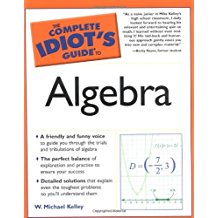Algebra: Radical Operations
Radical Operations
When I say "radical operations," I don't mean extreme medical procedures, like having your arm removed and replaced with an otter, or perhaps having your cousin Irving surgically grafted to your left side, so that you become the world's first man-made conjoined twins. Instead, I mean the much more boring concepts of adding, subtracting, multiplying, and dividing radicals.
There are specific rules you have to follow when simplifying expressions containing radical expressions, just like there are special rules governing polynomial expressions. Once again, you'll find that multiplication and division don't have the same strenuous requirements that addition and subtraction have placed on them.
Addition and Subtraction
Back in Introducing Polynomials, you learned that you could only add or subtract two polynomial terms together if they had the exact same variables; terms with matching variables were called "like terms." Radicals operate in a very similar way. In order to add two radicals together, they must be like radicals; in other words, they must contain the exact same radicand and index.
If you're asked to add or subtract radicals that contain different radicands, don't panic. Try to simplify the radicalsthat usually does the trick.
Example 3: Simplify the expression
Solution: Notice that the second radical can be simplified, since one of 50's factors is a perfect square. Rewrite
and pull the 5 out of the radical to get
The original problem now looks like this:
Talk the Talk
Like radicals have matching radicands and indices, like 652x2y and -952x2y ; only like radicals can be added to or subtracted from one another.
Simplify the second radical further by multiplying the 2 outside the parentheses by the coefficient within.
Without even trying to make it happen, you've created a pair of like radicals, since the radicands and indices match. Because they're like radicals, you can combine their coefficients (3 - 10 = -7) and follow the result with that matching radical expression. So, the final answer will be
You've Got Problems
Problem 3: Simplify the expression 38x4 + 4x3x.
Multiplication
Radicals have one important property that I have not yet mentioned: If two radicals with the same index are multiplied together, the result is just the product of the radicands beneath a single radical of that index. Translation: If you're multiplying radicals with matching indices, just multiply what's underneath the radical signs together, and write the result under a radical sign with the same index as the original radicals had.
Notice that you don't need like terms in order to multiply radicals; all you need is that matching index.
Example 4: Simplify the expression
Solution: You're asked to square that radical, which means it's multiplied by itself.
Multiply the radicands together and write the product beneath a radical sign of index 3:
Now all you need to do is simplify the radical.
You've Got Problems
This property of radicals is true thanks to exponential Rule 4 from Encountering Expressions, which said that (xy)a = xaya. Technically speaking, a radical is the same as a fractional power, so nxy is the same as (xy)1/n, which can be rewritten as x1/ny1/n, or (nx)(ny).
You've Got Problems
Problem 4: Simplify the product (12x2y)(3xy).
Division
The quotient of two radicals with the same index can be rewritten beneath a single radical sign, just like the product of those radicals. In other words, the expression x · y is equivalent to
However, there is a new concern that surfaces when you're dealing with radical divisionthe presence of a radical in the denominator of your final answer.
If an expression contains a radical symbol that cannot be completely eliminated during simplification, then it is most likely irrational. For a long time, it has been considered bad math etiquette to leave a radical in your answers, because of the long and ugly decimals associated with such numbers. It's the equivalent of going to a fancy dinner party and chewing with your mouth open, which would be considered rude, even if you don't mean it to be.
It's not as though you're actually expected to divide that horrible decimal into the numerator or anything, but even the prospect of such a gross division problem has created peer pressure to eliminate any radicals housed below the fraction line in a process called rationalizing the denominator. It's a final, and easy, step some teachers require and others (such as myself ) don't. Make sure to ask whether you'll be expected to rationalize denominators in solutions.
Example 5: Calculate and rationalize the quotient.
Solution: Write the quotient as a fraction beneath a single radical sign.
Talk the Talk
The process of removing all radical quantities from the denominator of a fraction is called rationalizing the denominator.
Critical Point
Remember, you're allowed to multiply a fraction by anything divided by itself, because that's technically the same thing as multiplying by 1 (anything divided by itself equals 1).
You can simplify the coefficients by dividing both 12 and 8 by 4, the greatest common factor. Apply exponential Rule 2 from Encountering Expressions to simplify the variables: x7 - 1 = x6 and y1 - 3 = y-2 (which means there's a y2 in the denominator).
Write the numerator and denominator as separate radicals again, and simplify them.
This fraction has an irrational piece in its denominator: 2 . To eliminate it, multiply that value times both the numerator and denominator.
Multiply the numerators and denominators separately and simplify. Notice the answer has no radical in the denominator.
You've Got Problems
Problem 5: Find the quotient and rationalize, if necessary.
2x2y3 · 18x3y2

Excerpted from The Complete Idiot's Guide to Algebra © 2004 by W. Michael Kelley. All rights reserved including the right of reproduction in whole or in part in any form. Used by arrangement with Alpha Books, a member of Penguin Group (USA) Inc.
You can purchase this book at Amazon.com and Barnes & Noble.







